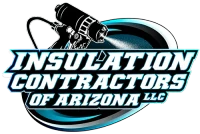Fiberglass Batt Insulation
Time-Tested, Budget-Friendly Insulation for Arizona Homes
The Traditional Choice for Home Insulation
Fiberglass batt insulation has been protecting American homes for over 80 years. This proven technology offers reliable thermal performance at an affordable price point, making it one of the most popular insulation choices for Arizona homeowners on a budget.
💰 Most Cost-Effective Initial Investment
Fiberglass batts offer the lowest upfront cost per square foot while still providing solid R-values ranging from R-13 for walls to R-38 for attics.
Understanding Fiberglass Batt Insulation
Fiberglass batts are pre-cut panels of insulation made from fine glass fibers. They're designed to fit standard spacing between wall studs, ceiling joists, and floor joists. Available in various thicknesses and R-values, they provide a flexible solution for different areas of your home.
Key Features & Benefits
✅ Affordable Installation
Lower material and labor costs compared to spray foam options
✅ Fire Resistant
Naturally fire-resistant without chemical treatments
✅ Sound Dampening
Reduces noise transmission between rooms and floors
✅ Non-Settling
Maintains thickness and R-value over time when properly installed
✅ Widely Available
Standard sizes fit most construction applications
✅ Easy to Upgrade
Can be layered or replaced without major renovation
Arizona Performance Considerations
While fiberglass batts are effective, Arizona's extreme climate presents unique challenges:
⚠️ Heat Performance Limitations
Fiberglass can lose up to 20% of its rated R-value when attic temperatures exceed 120°F. During Arizona summers, when attics reach 150-160°F, this performance drop is significant.
💧 Moisture Sensitivity
Fiberglass batts can absorb moisture during monsoon season, temporarily reducing effectiveness. Proper vapor barriers and ventilation are essential.
🌬️ Air Sealing Required
Batts don't create an air seal on their own. Additional air sealing measures are necessary to prevent energy loss through gaps and cracks.
Available R-Values & Applications
| Application | Typical R-Value | Thickness | Best Use |
|---|---|---|---|
| 2x4 Walls | R-13 to R-15 | 3.5" | Interior & exterior walls |
| 2x6 Walls | R-19 to R-21 | 5.5" | Exterior walls, better performance |
| Floors | R-19 to R-30 | 6.25" - 9.5" | Above crawl spaces, between floors |
| Attics | R-30 to R-38 | 9.5" - 12" | Ceiling/attic applications |
| Attics (High Performance) | R-49 to R-60 | 15" - 19" | Maximum attic protection |
Professional Installation Process
Proper installation is critical for fiberglass batt performance:
-
Air Sealing First
Seal all penetrations, gaps, and cracks before installing batts
-
Proper Fitting
Cut batts precisely to fill cavity completely without compression
-
No Gaps or Voids
Ensure full contact with all surfaces - even small gaps significantly reduce performance
-
Vapor Barrier Installation
Install appropriate vapor barriers for Arizona climate conditions
-
Secure Attachment
Properly secure batts to prevent sagging or displacement
-
Quality Inspection
Verify complete coverage and proper installation throughout
Cost Analysis
Typical Pricing (Installed)
- Wall Insulation (R-13): $0.80-$1.20 per sq ft
- Attic Insulation (R-38): $1.00-$1.50 per sq ft
- Average 1,500 sq ft attic: $1,500-$2,250
- Whole home retrofit: $2,500-$5,000
Energy Savings Potential
- Properly installed: 15-25% reduction in energy costs
- Combined with air sealing: 25-35% reduction
- ROI period: 5-8 years in Arizona climate
Comparing Fiberglass to Other Options
vs. Spray Foam
- ✅ 50-70% lower initial cost
- ✅ Easier future access to wiring/plumbing
- ❌ Lower R-value per inch
- ❌ No air sealing properties
- ❌ Performance degrades in extreme heat
vs. Blown-In Insulation
- ✅ No settling over time
- ✅ Easier to control thickness
- ❌ More labor-intensive installation
- ❌ Harder to achieve complete coverage
Best Applications for Fiberglass Batts
🏠 New Construction
Easy installation during framing phase with full access to cavities
🔨 Unfinished Spaces
Basements, garages, and additions where studs are exposed
🎵 Sound Control
Interior walls for noise reduction between rooms
💰 Budget Projects
When upfront cost is the primary consideration
Maintenance & Longevity
With proper installation and protection from moisture, fiberglass batts can last 20-30 years. However, in Arizona's extreme conditions:
- Inspect annually for settling or displacement
- Check for moisture damage after monsoon season
- Monitor for pest activity (rodents can nest in fiberglass)
- Consider upgrading when renovating or if energy bills increase
🦺 Safety Considerations
Fiberglass particles can irritate skin, eyes, and respiratory system. Professional installers use proper protective equipment including:
- Long sleeves and pants
- Safety glasses
- Dust masks or respirators
- Work gloves
Ready to Improve Your Home's Insulation?
Let our experts help you choose the right insulation solution for your needs and budget
